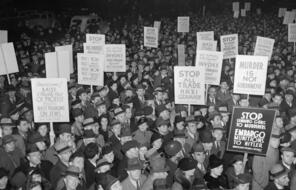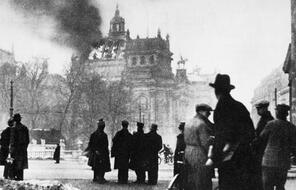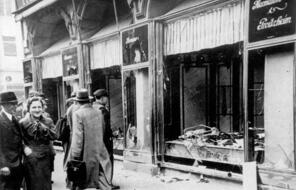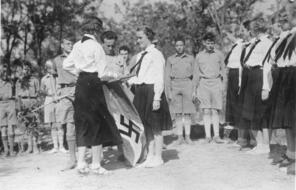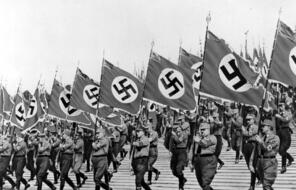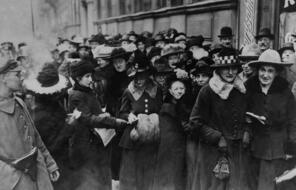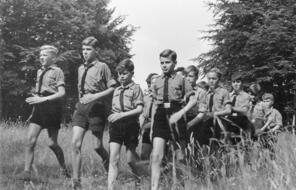The Blink of an Eye
Subject
- History
Language
English — USUpdated
How Social Environments Shape Behavior
When learning about how stereotypes and prejudice can affect an individual’s behavior, psychologists often distinguish between blatant and unconscious bigotry. Blatant bigotry is out in the open. According to social psychologist Susan Fiske, "We can identify the bare-faced bigots." Unconscious biases, meaning prejudice that we do not consciously or knowingly acknowledge, is different. Fiske describes how quickly this form of bias can be activated:
Neuroscience has shown that people can identify another person’s apparent race, gender, and age in a matter of milliseconds. In this blink of an eye, a complex network of stereotypes, emotional prejudices, and behavioral impulses activates. These knee-jerk reactions do not require conscious bigotry, though they are worsened by it. 1
Law professor Jerry Kang describes how unconscious, or implicit, bias works:
Stop for a moment and consider what bombards your senses every day. Think about everything you see, both still and moving, with all their color, detail, and depth. Think about what you hear in the background, perhaps a song on the radio, as you decode lyrics and musical notes. Think about touch, smell, and even taste. And while all that's happening, you might be walking or driving down the street, avoiding pedestrians and cars, chewing gum, digesting your breakfast, flipping through email on your smartphone. How does your brain do all this simultaneously?
It does so by processing through schemas, which are templates of knowledge that help us organize specific examples into broader categories. When we see, for example, something with a flat seat, a back, and some legs, we recognize it as a “chair” . . . We know what to do with an object that fits into the category “chair.” Without spending a lot of mental energy, we simply sit . . .
Kang writes that we create schemas in our unconscious minds about human beings, too. When we sort people into categories—such as by age, gender, race, and more—we unconsciously form expectations about them based on the category rather than the individual. Those expectations are based partly on our experiences with other people but are also shaped by stories, books, movies, media, and culture. Kang explains:
We see that some of the underlying cognitions [thoughts] include stereotypes, which are simply traits that we associate with a category. For instance, if we think that a particular category of human beings is frail—such as the elderly—we will not raise our guard. If we think that another category is foreign—such as Asians—we will be surprised by their fluent English. These cognitions also include attitudes, which are overall, evaluative feelings that are positive or negative. For instance, if we identify someone as having graduated from our beloved alma mater, we will feel more at ease. The term “implicit bias” includes both implicit stereotypes and implicit attitudes.
Though our shorthand schemas of people may be helpful in some situations, they also can lead to discriminatory behaviors if we are not careful. 2
Researchers have also shown that implicit bias can be reduced in a variety of ways, mostly by exposing ourselves to examples that contradict the bias. When we see images and read stories that reflect positively on a specific group, that can reduce a bias we might have had. Relationships between people of different races and ethnic groups have been shown to have a more lasting effect on reducing bias. Fiske agrees that just as implicit biases are learned, they can be unlearned:
But here’s the good news: more recent research shows that our prejudices are not inevitable; they are actually quite malleable, shaped by an ever-changing mix of cultural beliefs and social circumstances. While we may be hardwired to harbor prejudices against those who seem different or unfamiliar to us, it’s possible to override our worst impulses and reduce those prejudices. Doing so requires more than just individual good intentions; it requires broad social efforts to challenge stereotypes and get people to work together across group lines . . . 3
Connection Questions
- How does Susan Fiske distinguish between blatant bigotry and unconscious bias?
- How do we form unconscious prejudices? Are they ever useful? In what ways can they be harmful?
- How do other people influence our unconscious biases? What else influences them? Can history, or at least the way that history is told, influence our them?
- Should we try to resist or reduce our own unconscious biases? If so, what actions can we take to do so? What obstacles must be overcome? If we can’t eliminate our unconscious biases entirely, is it still worth trying?
- Why do you think friendships between people of different racial or ethnic groups have a more lasting effect on reducing bias than other ways of attempting to do so?
- In 2014, journalist Jenée Desmond-Harris wrote an article titled “Implicit bias means we're all probably at least a little bit racist.” What do you think of that title? Do you agree with that statement? Why or why not?
- 1Susan T. Fiske, “Are We Born Racist?,” in Are We Born Racist? New Insights from Neuroscience and Positive Psychology, ed. Jason Marsh, Rodolfo Mendoza-Denton, and Jeremy Adam Smith (Boston, MA: Beacon Press, 2010), 8.
- 2Jerry Kang, Implicit Bias: A Primer for Courts (n.p.: National Center for State Courts, 2009), 1–2, accessed April 29, 2016.
- 3Susan T. Fiske, “Are We Born Racist?,” in Are We Born Racist? New Insights from Neuroscience and Positive Psychology, eds. Jason Marsh, Rodolfo Mendoza-Denton, and Jeremy Adam Smith (Boston, MA: Beacon Press, 2010), 7.
Day of Learning 2013 - Binna Kandola: Diffusing Bias
How to Cite This Reading
Facing History & Ourselves, “The Blink of an Eye”, last updated August 2, 2016.



